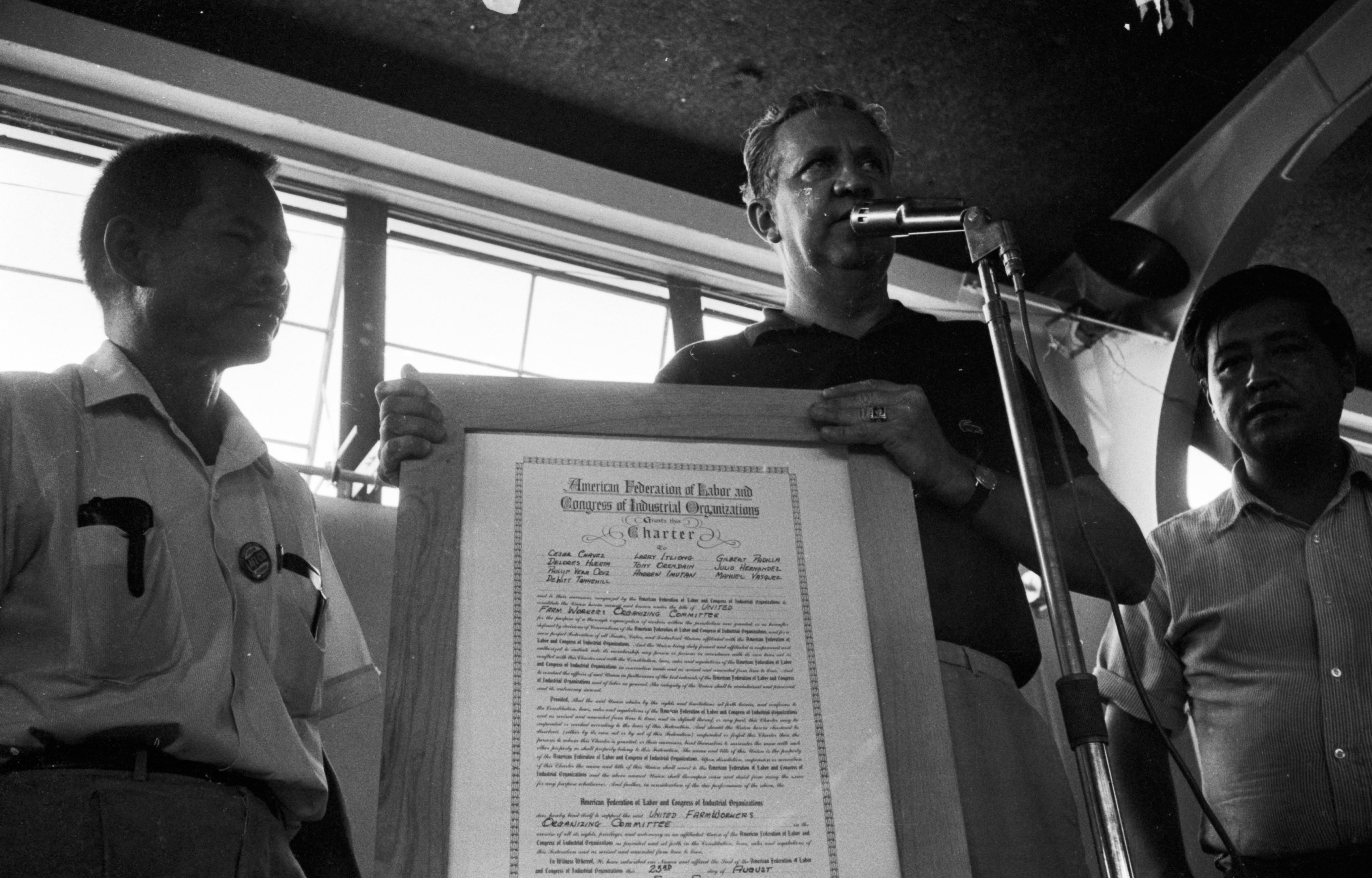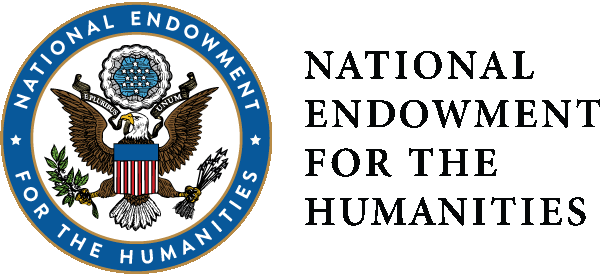UFWOC’s Charter Celebration
UFWOC’s Charter Celebration
César Chávez and Larry Itliong standing on stage during the UFWOC charter presentation, Delano, 1966. Photo by John Kouns.
Agustín Lira and Luis Valdez singing on stage during a UFWOC presentation, Delano, 1966. Photo by John Kouns.
When UFWOC was officially chartered, César Chávez became director and Larry Itliong assistant director. Besides Chávez and Itliong, the UFWOC’s executive board included leaders from both NFWA and AWOC: Gilbert Padilla, Philip Vera Cruz, Dolores Huerta, Tony Orendáin, Andy Imutan, Julio Hernández, Manuel Vásquez, and DeWitt Tannehill.
Bill Kircher presenting the UFWOC charter to César Chávez and Larry Itliong, Delano, 1966
William “Bill” Kircher was the national director of organizing assigned by the president of the AFL-CIO George Meany to go to Delano during the strike. Kircher met with Chávez during the march to Sacramento. There, Chávez decided that the NFWA would become an AFL-CIO affiliate and talks of an AWOC-NFWA merger began. One point brought up by opposition to the merger was that Kircher’s superior, Meany, steered the AFL-CIO in a more conservative direction and could handicap the NFWA like some of the more progressive unions before it. Chávez ultimately decided that the merger was a good idea because having AWOC and NFWA on the DiGiorgio ballot could split the anti-company and anti-Teamsters vote.
César Chávez standing on stage with a mariachi band, Delano, 1966. Photo by John Kouns.
Tom & Ethel Bradley Center
California State University, Northridge
18111 Nordhoff Street, Northridge, CA 91330
Phone: (818) 677-1200 / Contact Us


